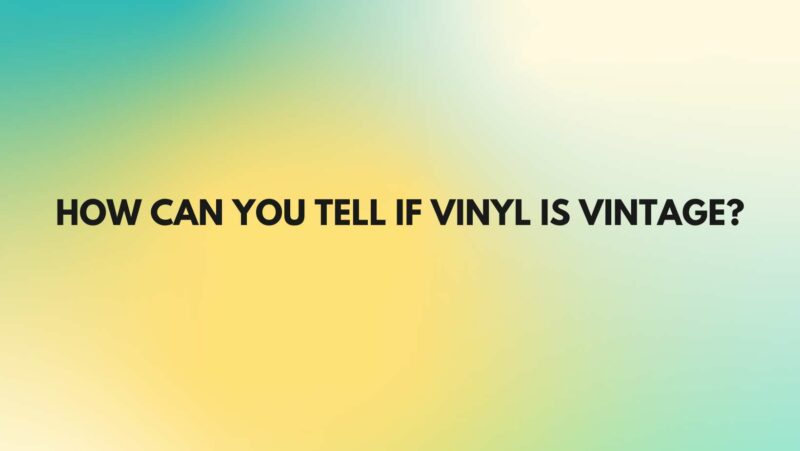Vinyl records have made a remarkable resurgence in recent years, appealing to both audiophiles and collectors alike. In the midst of this vinyl revival, many people seek to find and appreciate vintage vinyl records. These relics of music history not only provide a unique listening experience but also hold significant cultural and historical value. To determine if a vinyl record is indeed vintage, you need to consider various factors, such as the record’s age, label, cover artwork, and condition. In this comprehensive guide, we will explore these factors and help you become a discerning collector of vintage vinyl.
- Understanding Vinyl’s Golden Era
The term “vintage” often refers to items from a particular era, and the same applies to vinyl records. The golden era of vinyl records spans roughly from the 1950s to the 1980s. During this time, vinyl was the primary medium for music distribution, and record labels produced a wide array of albums spanning various genres. Records from this period are more likely to be considered vintage.
- Examining the Label
One of the most significant indicators of a vintage vinyl record is the label design. Record labels underwent changes over the decades, so studying the label can provide valuable clues about a record’s age:
- Columbia 6-Eye and 2-Eye Labels (1950s-1960s): These labels were used by Columbia Records during this era. The 6-Eye label featured six red Columbia logos in a circle, while the 2-Eye label had two red Columbia logos. Records with these labels are highly collectible.
- Blue Note Records (1950s-1960s): Blue Note is known for its iconic jazz releases. Look for the classic Blue Note label with the blue and white color scheme, which is synonymous with vintage jazz vinyl.
- Motown Records (1960s-1970s): Motown records often had a distinctive “map of Detroit” design on their labels during this period.
- Capitol Records Rainbow Label (1960s): Capitol Records used a rainbow-colored label during the 1960s, making it a recognizable vintage label.
- Atlantic Records (1950s-1960s): Atlantic Records used a black label with white printing during this era.
- Inspecting the Cover Artwork
The cover artwork of a vinyl record can also be a telltale sign of its vintage status. Many records from the 1950s through the 1980s featured unique and iconic cover designs that are associated with the music of their time. Here are some examples:
- 1960s Psychedelic Art: Albums from the late 1960s often feature colorful, psychedelic artwork. Bands like The Beatles and Jefferson Airplane are known for such covers.
- Minimalist Design (1950s-1960s): Early jazz and classical records often had minimalist cover designs with a focus on typography.
- Punk and New Wave (1970s-1980s): Punk and new wave records from the late 1970s and 1980s often featured bold and unconventional cover art.
- Disco Era (1970s): Disco records from the 1970s frequently had vibrant and glitzy cover designs.
- Checking the Catalog Number
Each vinyl record has a unique catalog number, which can provide information about its release date. Catalog numbers can vary significantly between record labels, so it’s essential to research the specific label’s numbering system to determine the record’s age accurately.
- Assessing the Vinyl’s Condition
The condition of a vinyl record is crucial in determining its value and collectibility. Vintage records that are well-preserved and in excellent condition tend to be more desirable to collectors. Factors to consider when assessing a record’s condition include:
- Surface Scratches: Light surface scratches are common on vintage records but should not affect play significantly. Deep scratches can impact sound quality.
- Warps: Records that are warped may skip or have tracking issues on a turntable.
- Wear on the Cover: Vintage record covers should ideally be free from tears, writing, and excessive wear.
- Cleanliness: Dust and dirt can accumulate on the vinyl’s surface, affecting sound quality. Proper cleaning can often restore playability.
Conclusion
Identifying vintage vinyl records requires a combination of knowledge about the era, label design, cover artwork, catalog numbers, and the condition of the record. By honing your skills in these areas, you can become a knowledgeable collector and appreciate the historical and musical significance of vintage vinyl. Whether you’re a dedicated vinyl enthusiast or simply looking to uncover hidden gems in your collection, this comprehensive guide will serve as a valuable resource in your quest for vintage vinyl treasures. Happy hunting!


